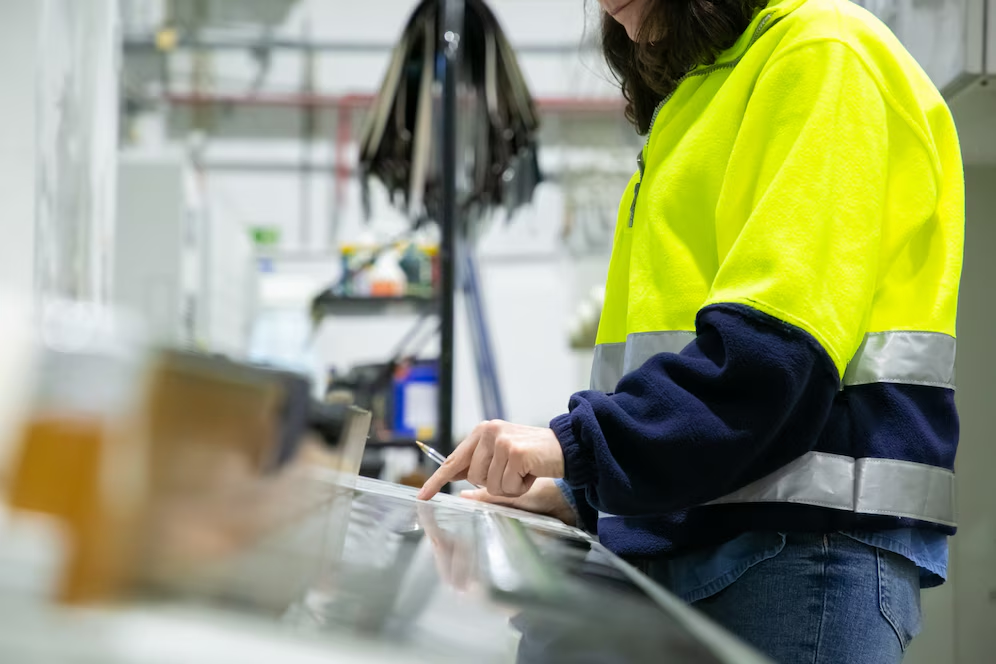All industries prioritize workplace safety. A safe environment and the protection of workers are indispensable in a variety of settings, including construction sites, warehouses, laboratories, and factories. Numerous tools and systems have been created over the years to enhance safety standards. One of the most significant developments is the use of plastic safety systems.
Workplace safety, organization, and the avoidance of accidents are the goals of these systems. With the help of durable plastic for safety gear, industries can now meet strict safety rules while also keeping things simple and cost-effective.In this article, we will discuss the operation of plastic safety systems, the advantages of using them, and the reasons why it is important to collaborate with the appropriate plastics manufacturers.
What Are Plastic Safety Systems?
Plastic safety systems are tools and structures made from strong plastics to keep workers safe in industrial settings. These systems can include:
- Safety helmets
- Face shields
- Safety glasses
- Plastic barriers and fences
- Machine guards
- Warning signs and floor markings
- Protective covers for equipment
By separating employees from potentially harmful machinery, chemicals, or moving parts, these items lessen the likelihood of injuries. Some systems are movable, while others are fixed in place.
The useful thing about plastic safety systems is that they are easy to bend. To meet different safety needs, they are easy to cut, shape, or mold. Plastic can be used to make a helmet that is light and strong or a wall that is thick and separates work areas.
Benefits of Durable Plastic for Safety Gear
Safety gear made with durable plastic is now widely used across many industries, and for good reason. Here are some of the top benefits:
1. Strong and Long-Lasting
Strong plastic can handle a lot of harm. This material does not easily crack or break, even when it is pushed. This results in the safety gear lasting longer and requiring less frequent replacements than it would otherwise. Workers are able to remain safe on a daily basis without having to worry about their safety because plastic gear is durable even in harsh environments of the workplace that are subjected to a great deal of use.
2. Lightweight and Comfortable
It’s much lighter to use plastic gear than metal gear. To wear for a long time, helmets, glasses, and shields made of plastic are better. People are more likely to wear their safety gear if they like it. People with less weight can move around and stay focused on the job better because they don’t have to deal with as much neck or back pain.
3. Resistant to Chemicals and Weather
Plastics used in safety gear are resistant to water, heat, cold, and many chemicals. This makes them perfect for tough environments like chemical plants, factories, and outdoor job sites. Even when weather changes or chemicals spill, plastic gear keeps working without damage, protecting workers in every condition.
4. Easy to Clean and Maintain
Plastic is easy to clean because it has a smooth surface. Some materials soak up oil, grease, and dust, but these don’t. Plastic gear is always ready to use after a quick wash with water or soap. This helps keep it clean and makes it last even longer.
5. Cost-Effective
Plastic is less expensive than metal or glass. This makes it easier for businesses to buy high-quality safety gear without going over budget. Companies can buy more gear for their teams, improving safety across the workplace without spending too much money.
Thanks to these benefits, durable plastic for safety gear has become the go-to choice in many industries.
How Plastic Safety Systems Improve Safety Standards
1. Reduces Accidents
Guards, shields, and barriers made of plastic help keep employees away from potentially hazardous machine parts. For example, a plastic guard on a machine can keep a worker’s hand from getting too close to moving parts.
2. Creates Safe Work Zones
Wall panels or plastic fencing can be used to separate dangerous areas, like places to weld or store chemicals. It’s easy to see where it’s safe to work, which helps keep people from getting hurt.
3. Improves Visibility
Many plastic safety items are made with transparent or brightly colored materials. This helps workers see hazards clearly. For example, clear face shields protect the face while allowing full vision.
4. Helps Follow Safety Rules
Government and industry rules often require safety gear and protection in the workplace. Plastic safety systems help companies meet these rules more easily. This lowers the risk of fines or shutdowns during inspections.
5. Fast and Easy to Install
Most safety systems made of plastic are simple to put together. You don’t need heavy machines or tools to quickly set up things like safety barriers or covers. This saves time and gets safety systems in place faster.
Overall, plastic safety systems make the workplace more organized, reduce confusion, and allow workers to do their jobs safely and confidently.
The Role of Plastics Manufacturers
A lot of what determines the quality of plastic safety systems is the company that makes them. These companies produce the plastic materials and components used in safety equipment and systems. Here’s why their role is so important:
1. Quality Materials
Good manufacturers utilize dependable and robust materials including polycarbonate, polypropylene, and polyethylene. These materials provide safety, impact resistance, and significant strength. They are tough enough to handle pressure, rough use, and extreme temperatures. This ensures the safety gear stays in good shape and protects workers for a long time.
2. Custom Designs
Various companies have various requirements. Trusted plastics manufacturers can make custom safety solutions based on the needs of the sector. This includes any shape, size, or color you want. From a unique helmet design to a unique equipment cover, plastic can be shaped to fit the precise task perfectly.
3. Safety Testing
Reputable manufacturers test their products to make sure they meet safety standards. This gives customers peace of mind knowing their safety gear will work when needed. These tests include checking for impact strength, durability, and chemical resistance to make sure the gear protects in real working conditions.
4. Large-Scale Production
For major projects or continuous use, manufacturers can create significant amounts of safety equipment. For sectors that use many people or run across several sites, this is particularly crucial. Bulk manufacturing guarantees every employee timely access to dependable safety equipment, free from supply problems or delays.
5. Eco-Friendly Options
Some manufacturers also offer recyclable or reusable plastic options. This helps reduce plastic waste and supports green workplace practices. Choosing eco-friendly plastic means companies can keep their teams safe while also caring for the environment by cutting down on waste and pollution.
Working with the right plastics manufacturers ensures that the safety systems used are strong, effective, and built to last.
Real-Life Example: Plastic Barriers in Warehouses
Consider a straightforward warehouse. Forklifts and people in busy warehouses run concurrently. Lack of defined routes or barriers makes this risky.
Installing plastic safety barriers helps separate people from machines. Bright yellow or orange barriers are easy to see and can prevent accidents by creating a safe walkway. These barriers can also be moved when needed, offering flexibility.
Several businesses claim improved workflow and less accidents following installation of plastic safety systems in their warehouses.
Conclusion
Employee safety should always be a top priority for any business. Plastic safety systems make it easier than ever to create a safe, efficient, and rule-compliant workplace.
The use of durable plastic for safety gear brings many benefits—strength, comfort, affordability, and chemical resistance. From safety helmets to plastic barriers, these tools help protect workers and reduce risks.
Dealing with dependable plastics producers guarantees the safety systems employed are of high quality and satisfy industry criteria. Investing in the appropriate safety systems will help to reduce injuries, improve production, and create a safer environment for all whether your company is large or small.
If you haven’t upgraded your safety systems yet, now is the time to consider plastic-based solutions. They’re simple, smart, and built to keep your team safe.



